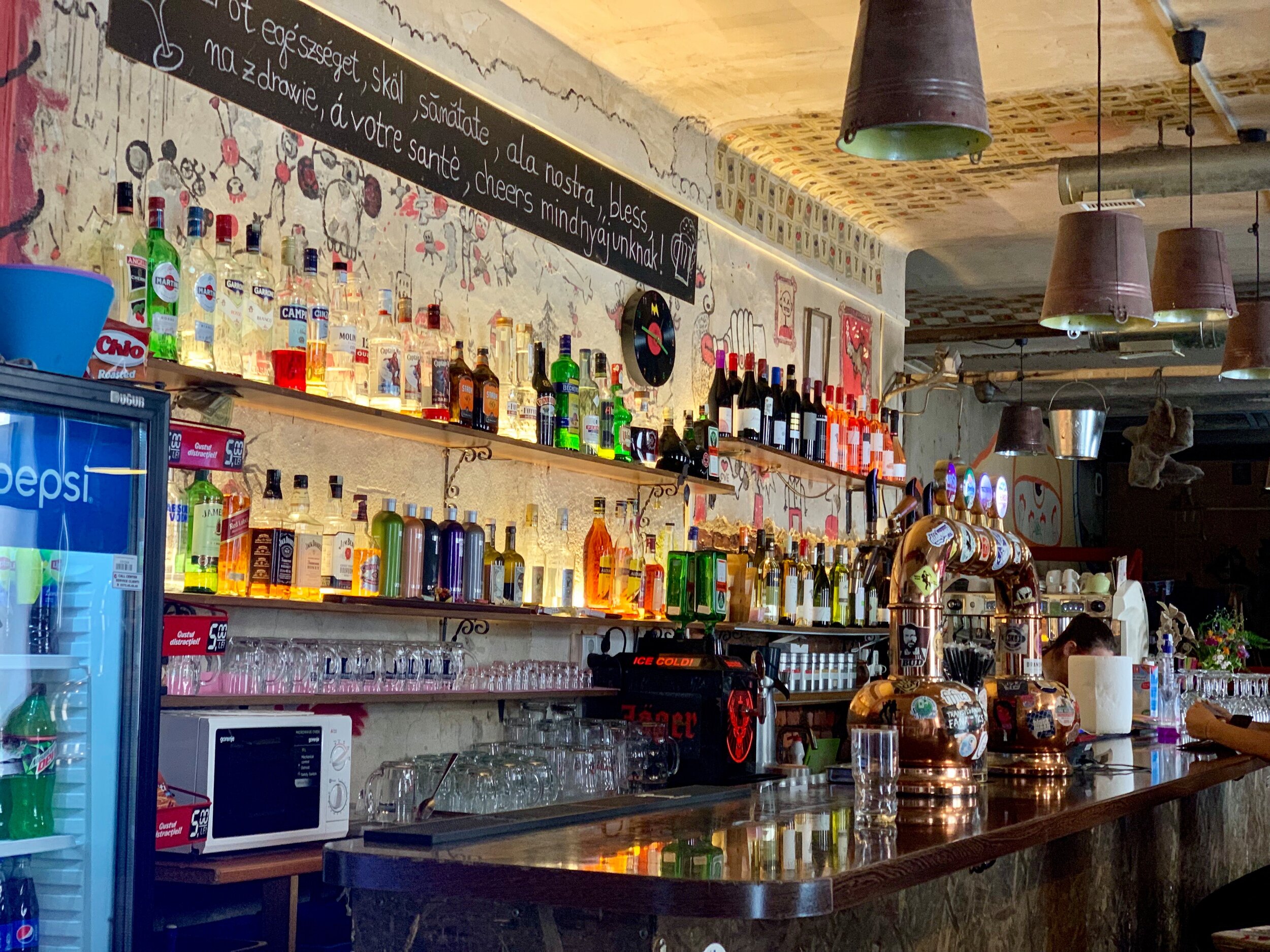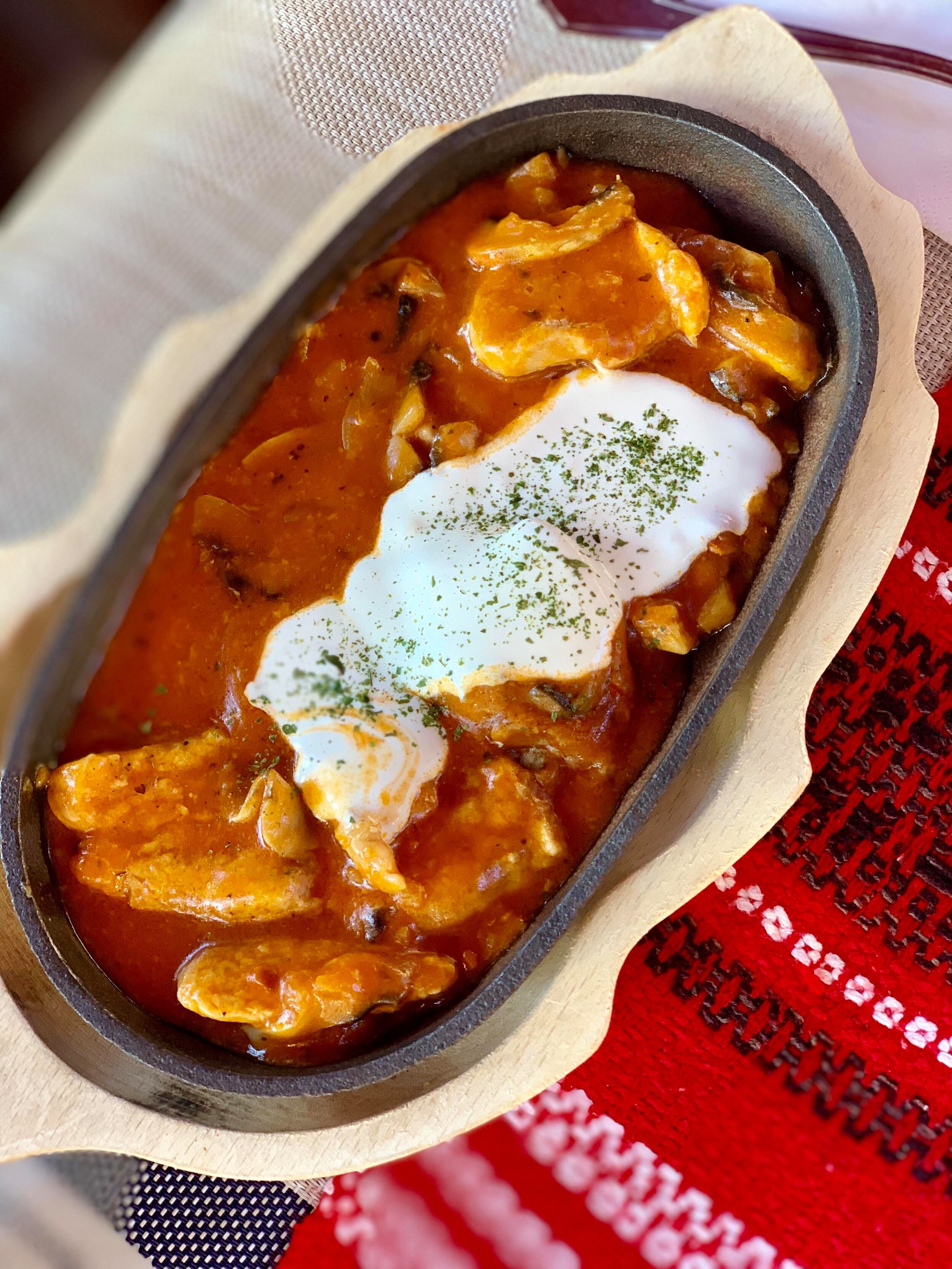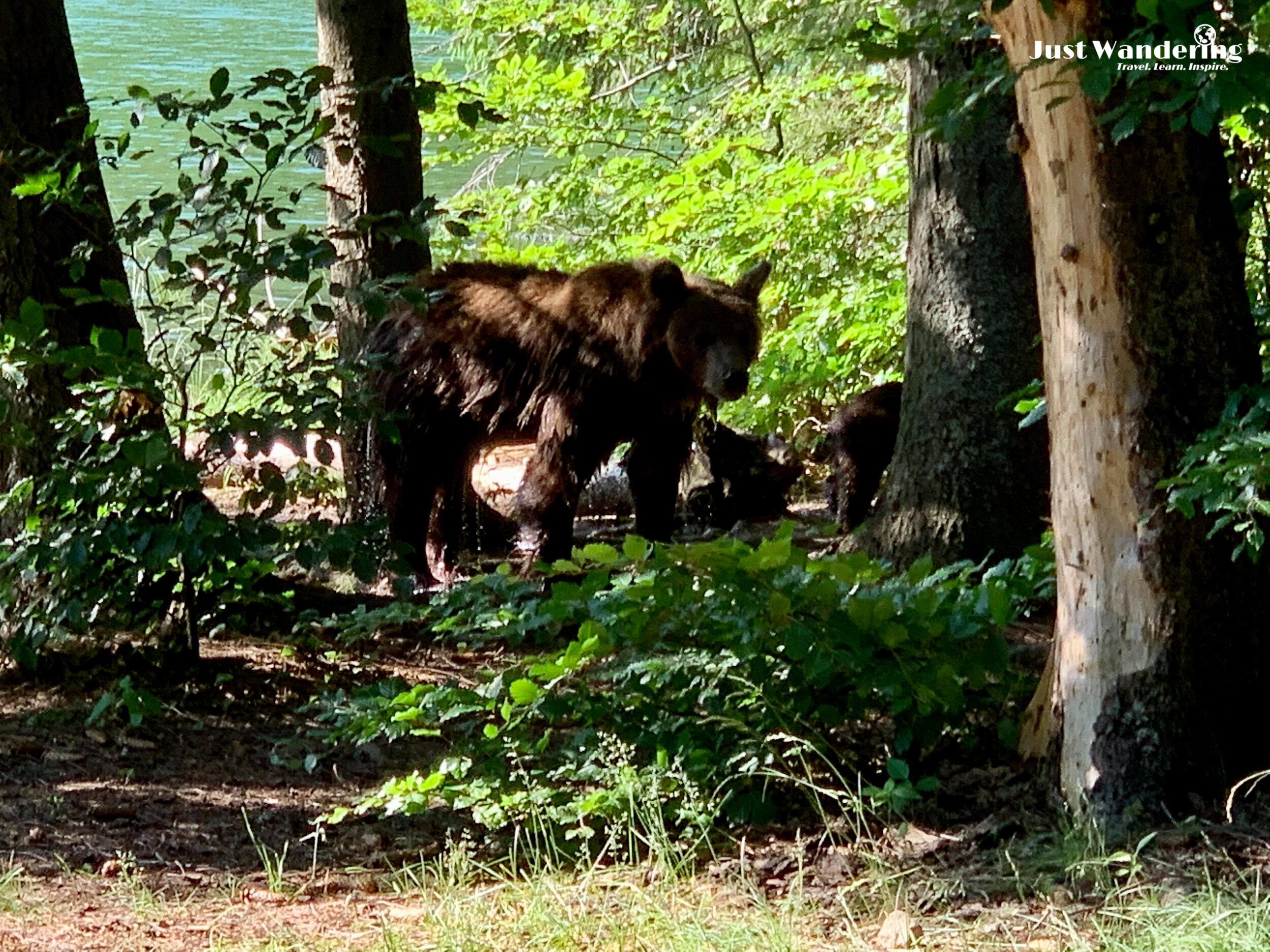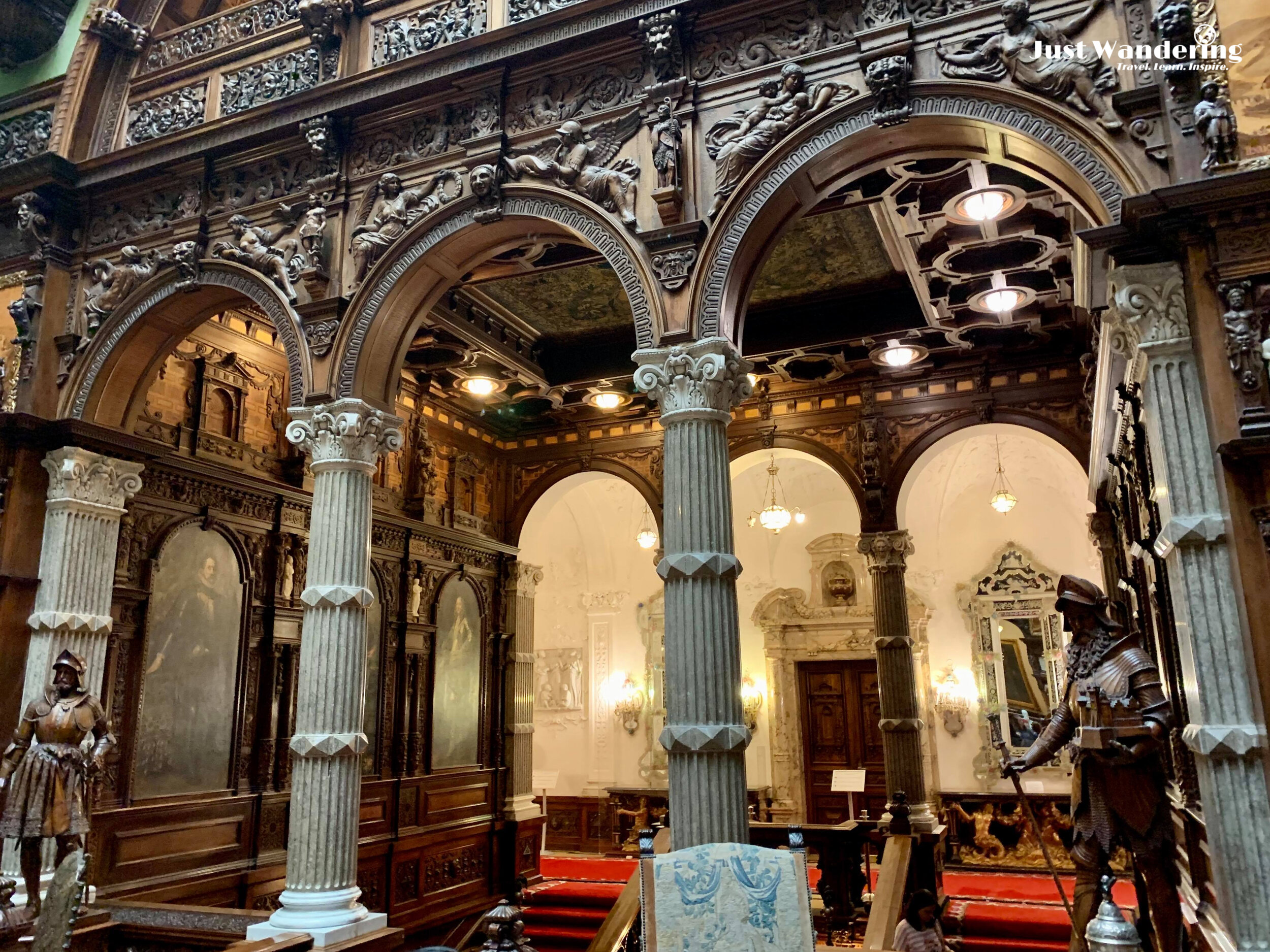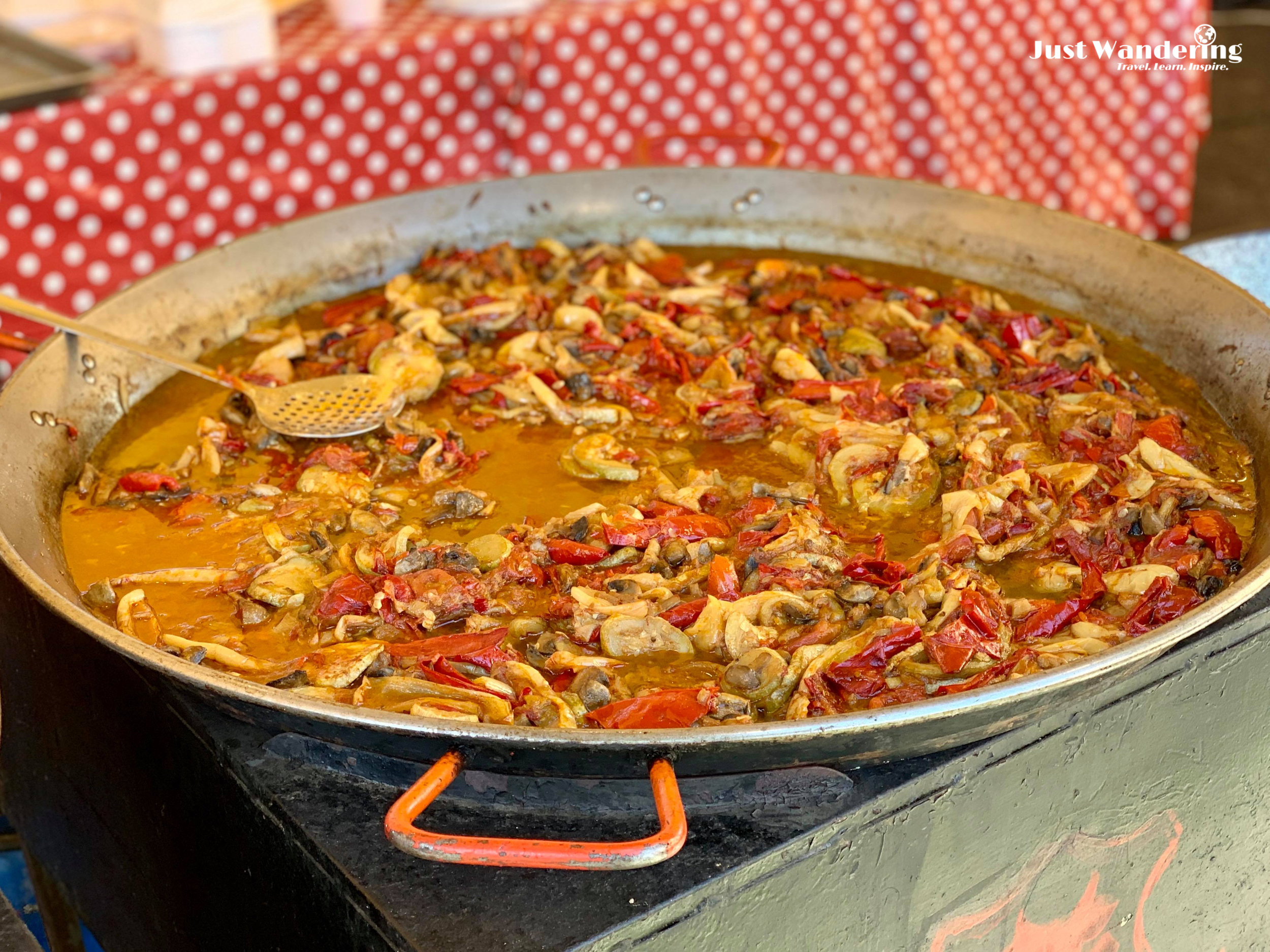I was fortunate enough to spend a week in the Transylvania region of Romania during July of 2019, volunteering with Care2Travel. If you’re interested, please check them out here, or, you can also get involved with them via the broader International Volunteer HQ platform. In addition to donating your time and effort to a good cause, I found my experience in Romania with Care2Travel culturally enriching; the organization is very good about organizing activities and sightseeing during volunteers’ off hours and weekends/days off, allowing us to see different parts of the beautiful Transylvania region.
It’s important to note that many who reside in this region typically identify as Hungarian instead of Romanian - typically, these individuals are known as Székely (pronounced SAI-KEY) and are typically native to the eastern Transylvanian region. How fitting that I was in Budapest right before (though I wasn’t aware of this interesting tidbit of information!)
This was likely why there was a direct overnight train from Budapest to the town in which I volunteered, known as Micurea-Ciuc (pronounced MEER-KURA-CHOOK) in Romania, or Csíkszereda (CHICK-SEREDA) in Hungarian.
overnight train
Budapest, Hungary - Miercurea-Ciuc, Romania
Because there was a direct train to Micurea-Ciuc from Budapest, I ended up taking the overnight train there. Though I own private compartment (highly recommended, otherwise there are two more beds that can be converted above the one pictured here!), the ride was still a bumpy one and sleep escaped me for that night 😥
The train itself, however, I thought was cleverly designed (the table converts into a washing basin 😮) and I got to watch the gentle hills of the Romanian countryside roll by on my way. Next time, however, I’d probably just take the 2 hour plane from Budapest to Bucarest (different places), and a car….
miercurea-ciuc
Whatever fears I harbored about venturing so far into a relatively tourist-scarce area of Europe as a solo traveler, were quickly dispelled by the beauty of Micurea-Ciuc. Indeed, I was pleasantly surprised at the cleanliness, development, and picturesque architecture found within this small city. From the spotless train station waiting room:
...to the town’s main plaza…
…to it’s main thoroughfares in the center of town…
{off to the left side here was the entrance to the Care2Travel volunteer dorms!)
to the churches…
to the history museums…
to the schools, Hogwarts-esque in its grandeur…
…to the other buildings…everything was so picturesque. Parts of the town, it’s important to note, did feature the standard Soviet-era square/block buildings/apartments that were largely functional and served as housing during the years Romania spent under Communist rule. It was a stark and rather interesting juxtaposition in contrast to the heavily European styles older buildings retained.
There are also several well-stocked bars within the town, with emphasis on several quintessential digestifs popular in these parts of Europe: Jägermeister and Unicum…
Jägermeister
Commonly known as a German digestif made with 56 herbs and spices, or, manifesting itself with perhaps greater prevalence in the form of jagerbombs.
A national drink of Hungary, this herbal liqueur is produced from a secret blend of more than forty different herbs and spices, coming in at a hefty 40% ABV (typical of most hard liquors).
To give you an idea of how it tastes, I ordered a shot of this and the bartender laughed. (Though I did confirm afterwards it was typically taken straight up!)
To eat…
A highly recommended traditional jaunt in the city - Gambrinus - serves up great Hungarian fare in a lush courtyard setting, contrasted with its much more traditional decor indoors.
Bográcsgulyás - Hungarian kettle goulash
Tárkonyos pityókaleves sertés húskockákkal, pirított baconszalonnával
Sour potato soup (better than it sounds!)
Mandulás bundában sült camembert áfonyamártással
Fried camembert covered with almond, served with blueberry-sauce
Tejföles- gombás csirkeragú serpenyőben
Chicken-ragout with sour-cream and mushrooms
Töltött káposzta
Transylvanian stuffed cabbage
As developed and modern the town is, however, many of the residents in the surrounding countryside still seem to adhere to a more traditional way of life.
This can be seen though their methods of transportation: during my week here, horse-drawn carts and buggies were incredibly common to see, and seemed to be an oft-used way for families to get around.
Praid Salt Mine
The Praid salt mine is the oldest and largest salt mine in the country, with mining activities in the region dating back to ancient Roman times. Apparently, the air in salt mines are extra pure due to it being free from contaminants, allergens and bacteria, and is good for those seeking respite from asthma to bronchitis. Salt particles in the air also allows the mine to maintain constant levels of humidity and temperature, and thus higher atmospheric pressure and more highly ionized air than can be found on the surface Though the science is somewhat shaky behind the medical benefits of salt mines, it has nevertheless become a popular place for locals to come for exercise and relaxation alike.
And so, the vast underground chambers of the salt mine has been expanded upon to include various areas and activities, including…
…a playground for children
…an arcade
…a church
…a restaurant
…a place for large scale calisthenics
and you guessed it, even…a bar
to eat
It should come as no surprise, given Hungarian cuisine’s affinity and (perhaps) notoriety for soups and stews, that our meals were predominantly served in bowls.
In true Eastern European fashion, cabbage was a popular ingredient found in our meals, along with a dollop of sausage - also a pretty typical condiment/addition to a dish.
A stew comprised of chunks of carrots, salted pork fat, ham, served with bread.
Celery, some kind of grain, red peppers, served with bread.
Potatoes! This wasn’t served as a main dish, but an accompaniment to a stew. A pretty typical potato salad made from chunks of boiled potatoes, sour cream, and a sprinkling of salt and pepper.
Something that’s eaten fairly often as a condiment (?) is a creamy pork pate typically sold in grocery stores. The ways I’ve observed it being eaten are slathered on bread…that’s pretty much it.
Perhaps somewhat unsurprisingly, meals here featured heavily on meat and sausages. Seen to the left, a platter of various meatballs, sausages, hams, and croquettes.
For a vegetarian side - carved out tomato halves stuffed with Salata de vinete (Roasted Eggplant Salad). An interesting (and rather pretty) combination.
So this was a rather strange one - a minced meat, mayonnaise mixture, which was also interspersed with corn kernels and peas, along with chunks of potato. We were told it was potato salad, though there was definite presence of canned meats in some. The bottom left is a hummus like paste made from chickpeas and bottom right, Salata de vinete (Roasted Eggplant Salad), same as found in the tomatoes above. I was told the containers are commonly sound pre-packaged in the cold-storage section of grocery stores.
to drink
Pálinka
A fruit brandy typically made from plums that is also native to Hungary, and traces its origins back to the Middle Ages. Typically with an ABV of around 40%, the liquor can also be distilled from apricots, apples, pears, and cherries.In Romanian it is called pălincă, though because of the prevalence of Hungarian in this part of Romania, you’ll likely see the former spelling.
Typically taken in a shot, it has a distinctively strong aftertaste, with a hint of plum/prune/apricot, though that miiight just be my imagination!
A popular brand of beer brewed at a distillery nearby, Csiki Sör produces a number of draughts, IPAs, and flavored beer. A particular favorite of mine during my time here was a raspberry and/or strawberry flavored beer sold on tap and bottled at many restaurants. Refreshing, crisp, and alcoholic with just the right amount of sweetness,, definitely worth a try if you’re in the region.
Lake Sfânta Ana (Lake Saint anna)
The only crater lake (formed in the crater of a volcano) in Romania, we visited the lake in the hopes of catching a glimpse of the many bears that frequent the area.
Bears
And we weren’t disappointed! A short while after our arrival, a mother bear with two cubs were spotted within the trees by the lake.
Within a few minutes, however, a park ranger came to make sure we maintained our distance, as mother bears can be exceptionally dangerous due to the heightened protective nature surrounding her cubs. I have to say seeing the bears were an exciting experience for me, in all my travels to the national parks of the U.S. and Canada, I have yet to see a bear out in the wild - so this was a really pleasant surprise!
Kürtőskalács
This is a type of ‘spit cake’ (cakes baked over cylindrical metal stakes over an open pit of charcoal, seen here) especially popular among the Székely regions of Romania, and generally in Hungary as well. You may note their strong resemblance to the cakes sold everywhere in Eastern European cities like Prague.
Ingredients
The ingredients needed are relatively basic - flour, egg, milk, yeast (the dough needs to rise)…
and can’t forget the sprinkling of lemon zest!
Mix the ingredients well, and add more flour to the batter to make dough.
We went to house of the most adorable couple, married for decades, they have been making kürtőskalács out of the workshop/kitchen attached to their house for decades. Typically, the cakes are more in demand around the holiday seasons, but from what I observed, they’re frequently sold and eaten in supermarkets / on a day to day basis by the locals as well.
Once properly kneaded - the dough is separated and left to rise with the proper coverings. To speed the process up, the dough is often left above a slight heat source to activate the yeast. After the dough has risen, it is rolled into a thin strand.
Arguably the most technically demanding part of the process - twisting the strand of dough around the metal spit.
The roasting process requires the dough to be meticulously slathered with butter, until the outer shell turns into a crisp golden brown. As you can see in the video above, the truncated spit spins automatically as a result of the rotating mechanism on the back edge of the charcoal pit.
Once fully cooked, the cake is rolled in a layer of sugar, and laid to cool on a rack.
And there you have it! Chimney/funnel/Hungarian tunnel cakes - more accurately known as Kürtőskalács made by yours truly. (Only one of them, and I don’t even know which…). BUT - they were delicious!
I’ll open this section with the fact that the most famous castle of Transylvania isn’t Peleș (though many would argue it is the most picturesque), but Bran Castle. You may know the latter as the home of Count Dracula, one of the region’s most (in)famous exports to the outside world. The truth is that the castle is only tangentially linked to Vlad the Impaler, a commonly agreed source of inspiration for the Count. Indeed, evidence points to the fact that he most likely never lived there, if he knew of Bran’s existence at all. It remains, however, arguably the most popular destination of the area - lines to enter the castle can stretch into the hours on the weekends, as visitors from local and abroad seek to catch a glimpse inside the rumored home of Dracula. Though Bran itself is picturesque, visitors should beware that it is a much smaller castle than expected, resembling a large manor atop a cliff versus a grand castle.
With limited time, I opted to skip the crowds and visit Peleș Castle instead, a more statuesque (not to mention less crowded) castle in the region.
Peleș Castle
By form and function, Peleş is a palace, but it is consistently called a castle. Its architectural style is a romantically inspired blend Neo-Renaissance and Gothic Revival similar to Schloss Neuschwanstein in Bavaria. A Saxon influence can be observed in the interior courtyard facades, which have allegorical hand-painted murals and ornate fachwerk similar to that seen in northern European alpine architecture. Interior decoration is mostly Baroque influenced, with heavy carved woods and exquisite fabrics. Commissioned by King Carol I in 1873 and completed in 1883, the castle served as the summer residence of the royal family until 1947. - Wikipedia
interior of peles
Peleş Castle has a 3,200-square-metre (34,000 sq ft) floor plan with over 170 rooms, many with dedicated themes from world cultures (in a similar fashion as other Romanian palaces, such as Cotroceni Palace). Themes vary by function (offices, libraries, armouries, art galleries) or by style (Florentine, Turkish, Moorish, French, Imperial); all the rooms are lavishly furnished and decorated to the slightest detail. There are 30 bathrooms. The establishment has collections of statues, paintings, furniture, arms and armor, gold, silver, stained glass, ivory, porcelain, tapestries and rugs. - Wikipedia
Note that to take pictures of the interior of the castle, there is a separate ‘photography fee’ that must be purchased at the ticket counter. And they’re very strict about monitoring/limiting those who take photos to people who have bought the tickets. For example, a castle personnel pinned my receipt for the ‘photography fee’ to my lapel, indicating to other staff and the guides I was allowed to take pictures…!
Holul de Onoare (The Hall of Honour), above, was finished completely only in 1911, under the guidance of Karel Liman. It spreads over three floors. Walls are dressed in exquisitely carved woodwork, mostly European walnut and exotic timbers. Bas-reliefs, alabaster sculptures, and retractable stained glass panels complete the decor. - Wikipedia
The castle itself is very impressive through the riches it has accumulated: old and new canvases, old furniture, weapons, all sort of curios, everything placed with good taste.
- Kaiser Franz Joseph I of Austria-Hungary in a letter upon his visit on 2 October 1896
The furniture in the Music Room, below, is carved of teak, a gift to King Carol I from the Maharajah of Kapurtala in India.
Sala Mare de Arme (The Grand Armory or The Arsenal), below, is where 1,600 of the 4,000 pieces of weaponry and armor reside. One of Europe's finest collection of hunting and war implements, time lined between 14th and 19th century, are on display. The king added pieces used in his victory against the Ottoman Turks during the War of Independence. - Wikipedia
Famous are the complete Maximilian armor for horse and rider, below, and a 15th-century German "nobles only" decapitation broadsword. - Wikipedia
“The interior of the castle is a true wonder, due to the beauty and richness of the sculpted wood and the stained glass windows.”
- Angelo de Gubernatis (1840–1913), an Italian writer who arrived in 1898 as a guest of the Royal Family.
Ceiling of the Grand Hall
Sala Florentină (The Florentine Room), below, combines revived elements of the Italian Renaissance, mostly from Florence. Most impressive are the solid bronze doors executed in Rome; ateliers of Luigi Magni; and the Grand Marble Fireplace executed by Paunazio with Michelangelo motifs. - Wikipedia
Dining Room
Below, the Salonul Turcesc (The Turkish Parlor) emulates an Ottoman "joie de vivre" atmosphere—a room full of Turkish Izmir rugs and copperware from Anatolia and Persia. It was used as a smoking room for gentlemen. Walls are covered in hand-made textiles like silk brocades from the Siegert shops of Vienna. - Wikipedia
“The castle’s courtyard – Bramantes type – with a fountain in the middle, in the most accurate Renaissance style, pleasantly surprises the visitor. The courtyard has a merry decoration, made out of plants and flowers; all round, the building’s facades are animated by elegant drawings. ”
Prejmer Fortified Church…
is one of the 25 UNESCO World Heritage Sites in Romania.
It is the largest fortified church in southeastern Europe, Prejmer (Tartlau in German) was built by Teutonic knights in 1212-1213. Historical records attest that in its 500 years of existence, the fortress was besieged 50 times but only captured once. - Wikipedia
The main church complex
On the interior side of the wall, there are four levels containing rooms and storage space and backed by the battlement. The over 270 rooms could offer shelter to some 1600 villagers in case of attack. - Wikipedia
When Ottoman forces or other invaders would break through the Buzău Pass, Prejmer was the first place they encountered. Due to this strategic position, the church was strongly fortified in the 15th-16th centuries. The circular walls are up to 5 m thick and reach nearly 12 m in height. - Wikipedia
traditional Romanian fare
Grilled meats is common in Romania fare, perhaps none more than Mici or Mititei - literally translated as “small ones” aka small sausages of minced pork and beef, mixed with spices and garlic as well as sodium bicarbonate.
A large pan of stew featuring mushrooms and bell peppers, perhaps Tocanita de Ciuperci (mushroom stew)?
Most likely: Tocanita de Ciuperci (Mushroom Stew)
Speaking of Sarmale
It’s typically considered the national dish of Romania. Usually it consists of a minced meat and rice mixture stuffed in cabbage rolls. Supposedly, some of the biggest differences between the Romania cabbage roles and those of other Eastern European countries is that sour cabbage is used, and in addition to minced meat (typically pork or pork + beef) some element of smoked meat is added to the mixture as well.
Slănină
Another popular, predominantly Slavic dish, seen here are two slices of toast rubbed with slănină (pork fat) and topped with raw onions.
According to the all knowing Wikipedia, this is a traditional, predominantly Slavic food consisting of cured slabs of fatback (ie. fat), with or without skin. The food is commonly eaten and known under different names in countries across the region. It is usually dry salt or brine cured.
Tastes like bacon, and the crunchy raw onions was a great way to offset the heaviness of the fat/topping of lard. Definitely never had a open-faced sandwich like this - worth a try!
Another popular staple. smoked pork hocks roasting, below.













